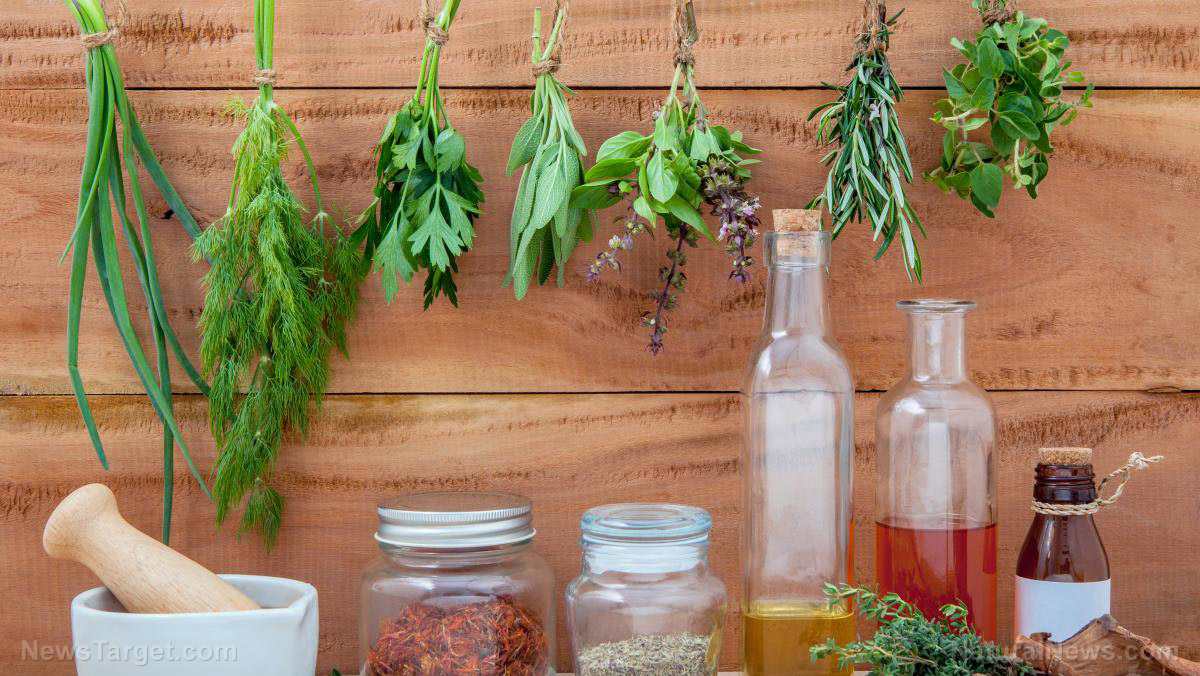Prepper tips: 10 Ways to maintain oral hygiene in the wilderness
04/13/2022 / By Zoey Sky

There are many ways to maintain oral health, but you need to get creative when SHTF. If you’re stuck outdoors after disaster strikes, you can keep your teeth clean with makeshift supplies like baking soda or activated charcoal. (h/t to SurvivalSullivan.com)
Oral health isn’t just about keeping your teeth pearly white. When you’re bugging out in the wild, keeping your teeth clean will help keep your breath fresh and prevent tooth decay and other oral health problems.
Below are 10 ways to brush or clean your teeth without the usual supplies while camping or surviving in the wilderness.
Make a toothbrush from a branch
Get a branch that is about as large around as your ring finger and is fully formed, but still young and soft.
Peel the bark on one end and cut a series of intersecting slits in it. Gently chew on the cut end of the branch to fray the fibers of the wood open until you have a fuzzy, brush-like surface.
Moisten the branch toothbrush in a bit of water. Cut it down and start again if it wears out or make a new brush with a different branch.
It’s best to use branches from fruit trees as they tend to have mild antiseptic properties.
Use a cloth
Use a clean piece of cloth wrapped around the end of your finger to scrub and polish your teeth like you are buffing a surface.
This method helps get rid of surface stains, debris and plaque. However, it won’t eliminate all the food particles stuck in between your teeth.
Use a clean, soft cloth, an old t-shirt, or a bandana. Wet the cloth or dip it in water, then rub it around all of your teeth using circular, back-and-forth and up-and-down motions.
Whittle a toothpick from a twig
If you are in the wilderness and have a hunting knife or multitool, you can easily whittle yourself a toothpick.
Snap off a small piece of branch, preferably one that is relatively straight, then whittle it down to a point with your knife. Once you have a sharp, pointy toothpick, use it to pick food out from between your teeth or to scrub away plaque or tartar buildup.
Make an activated charcoal scrub
Activated charcoal is a great way to clean your teeth if you run out of toothpaste. Activated charcoal is made from carbon that has been treated with oxygen, and it also has several medicinal and cleaning properties.
To use it as a tooth scrub, wet your toothbrush or improvised tooth cleaning apparatus, dip it in the activated charcoal powder and brush your teeth like normal.
Activated charcoal will turn your teeth black, but just spit and rinse when you are done. Use only fine, powdered activated charcoal to avoid hurting your gums. (Related: Build a survival dental kit to maintain dental hygiene even when SHTF.)
Don’t confuse charcoal with activated charcoal. The latter is more porous, has a higher surface area and is purer than regular charcoal. Regular charcoal isn’t as effective and using it can expose you to chemical additives or impurities.
Clean your teeth with baking soda
Baking soda is another all-around cleaning agent that can be used to clean your teeth.
Don’t brush too hard with baking soda because it is mildly abrasive and can irritate the tissues of your mouth. It also helps remove plaque and surface stains and it has proven antibacterial properties.
To use baking soda as toothpaste, wet your toothbrush, dip it in the baking soda and brush your teeth. Spit and rinse when done.
Do a salt water rinse
Salt is another natural cleaner and disinfectant that can be used to clean your teeth. It is less abrasive than baking soda.
Salt also has antibacterial and germ-killing properties. To use salt as a mouthwash, dissolve some salt in water and gargle with the mixture for about 60 seconds before spitting it out. Don’t swallow salt water, it can make you sick and cause dehydration.
Make pine needle mouthwash
Gather clean, young pine needles that have just unfurled. Next, get some water and a container to hold the mixture as it steeps.
Crush and pound the needles until they are broken up and pasty, then add the needles to the container before pouring near-boiling water over them until they are covered.
Let the mixture steep for half an hour before straining it through a cloth or a coffee filter. After it has cooled, swish it around your mouth for 30 to 60 seconds before spitting it out.
Water bottle oral irrigator
Use water from your water bottle to rinse your mouth out. This won’t remove all the plaque or bacteria, but it will help remove some of the debris that has built up on your teeth during the day.
First, poke a tiny hole in the cap of a water bottle to make an improvised squirt bottle. This will help build up the necessary pressure to get a jet of water blasting in between your teeth.
Aim the stream of water at your teeth and gum line, then move it around to remove any debris. Spit the water out after each squirt. Do this several times until you feel like your mouth is clean.
Chew sugar-free gum
If you’re on the go, keep your teeth clean with sugar-free gum. It helps remove plaque and bacteria from your teeth, and it also stimulates saliva production, which helps to neutralize acids and rinse debris.
“Brush” with your finger
Wash your hands with soap and water, dip a finger in a bit of water, then rub it around all of your teeth using the same circular, back-and-forth and up-and-down motions.
When SHTF, keeping your teeth and gums clean can help prevent infection and disease. If you lose your survival kit and supplies, use natural ingredients like salt water and pine needles to keep your teeth clean.
Watch the video below to learn how your oral health affects your overall well-being.
This video is from the Health Ranger Store channel on Brighteon.com.
More related stories:
3 DIY toothpaste recipes for optimal oral health and hygiene.
Don’t forget your toothbrush when SHTF: Off-grid oral hygiene.
Poor oral hygiene linked to heart disease, warn researchers.
Sources include:
Submit a correction >>
Tagged Under:
10 tips, bug out, green living, Hygiene supplies, natural health, off grid, oral care, oral health, oral hygiene, preparedness, prepper, prepping, SHTF, survival, tips
This article may contain statements that reflect the opinion of the author
RECENT NEWS & ARTICLES
Natural.News is a fact-based public education website published by Natural News Features, LLC.
All content copyright © 2018 by Natural News Features, LLC.
Contact Us with Tips or Corrections
All trademarks, registered trademarks and servicemarks mentioned on this site are the property of their respective owners.






















